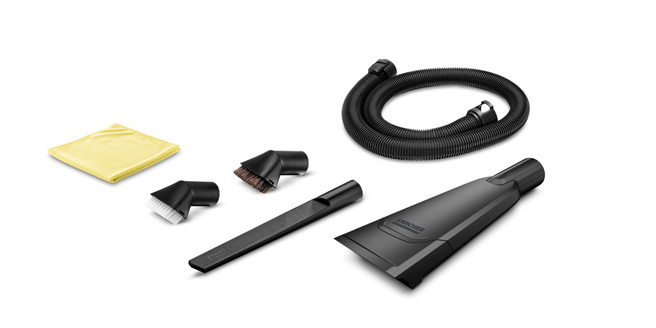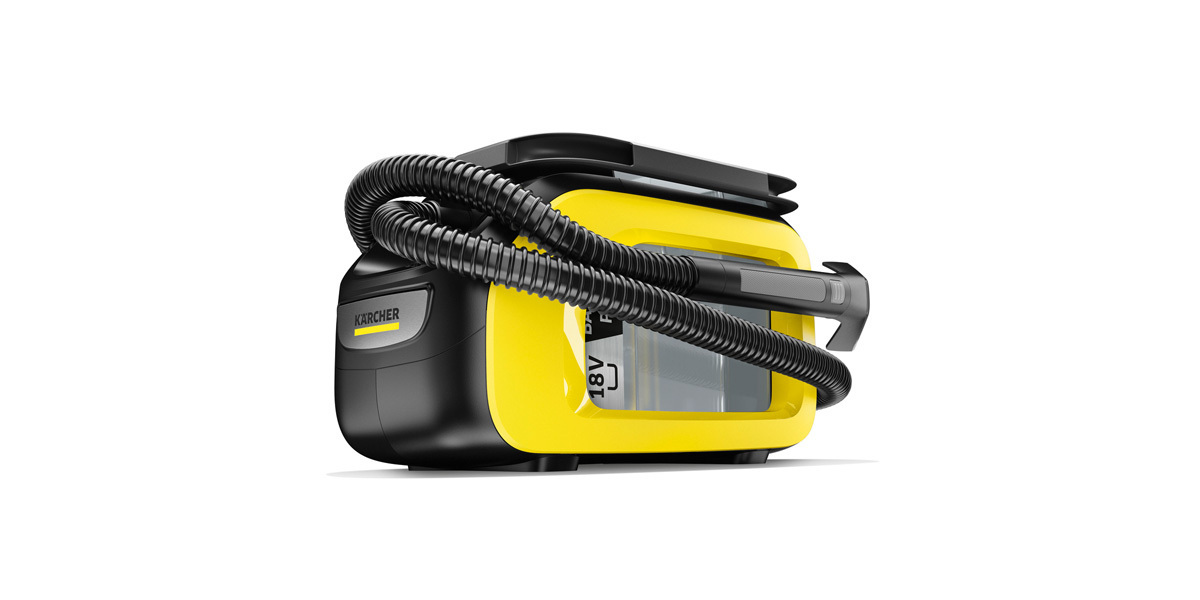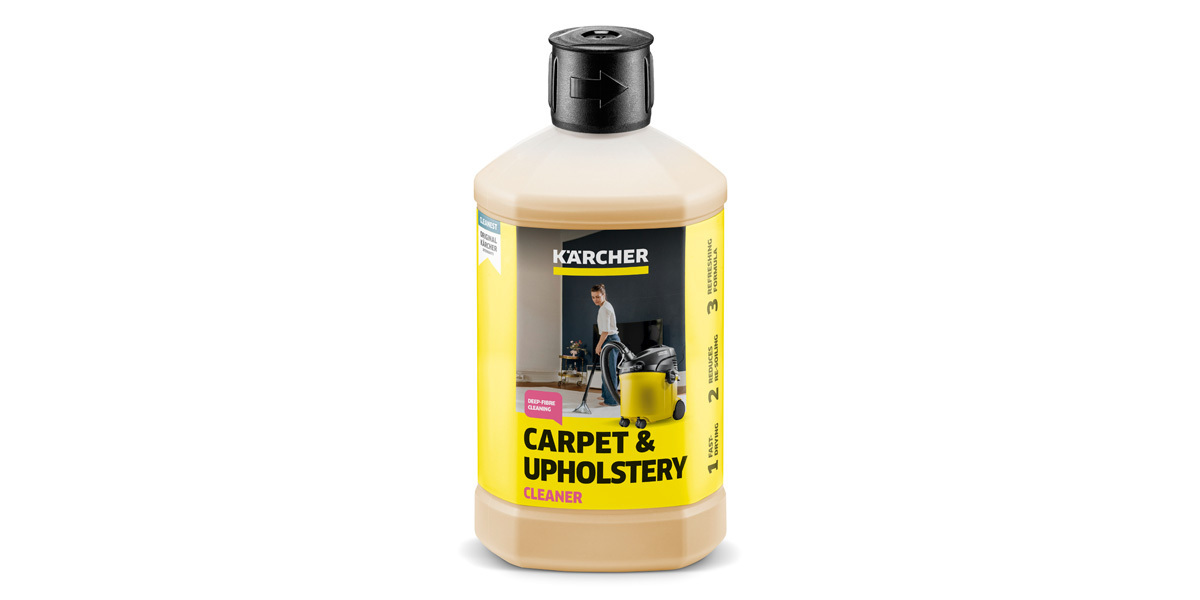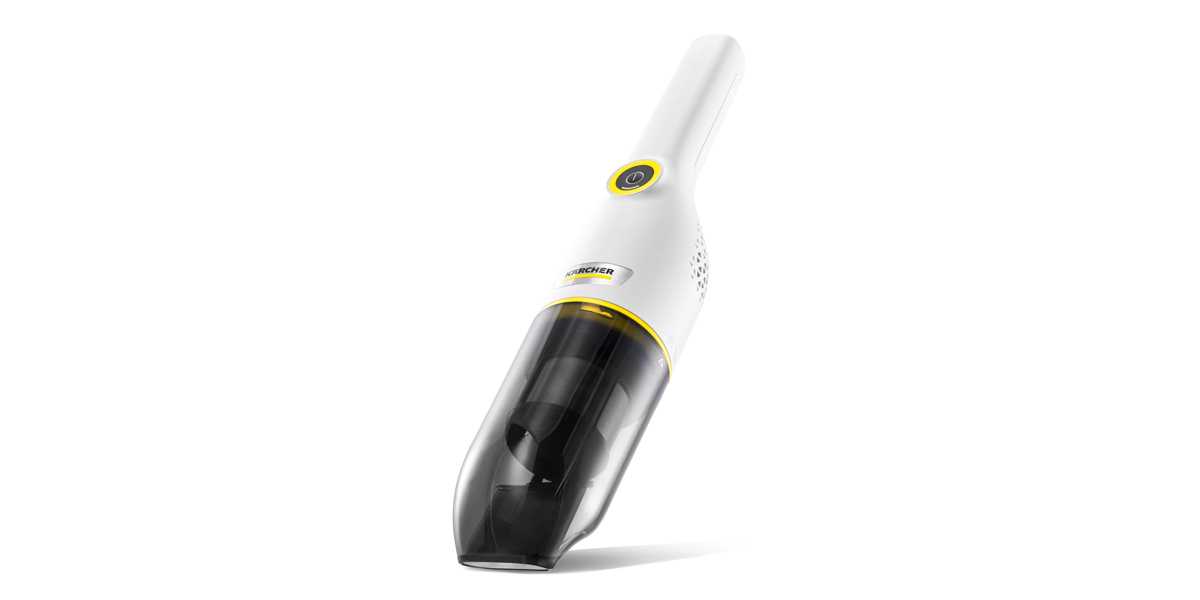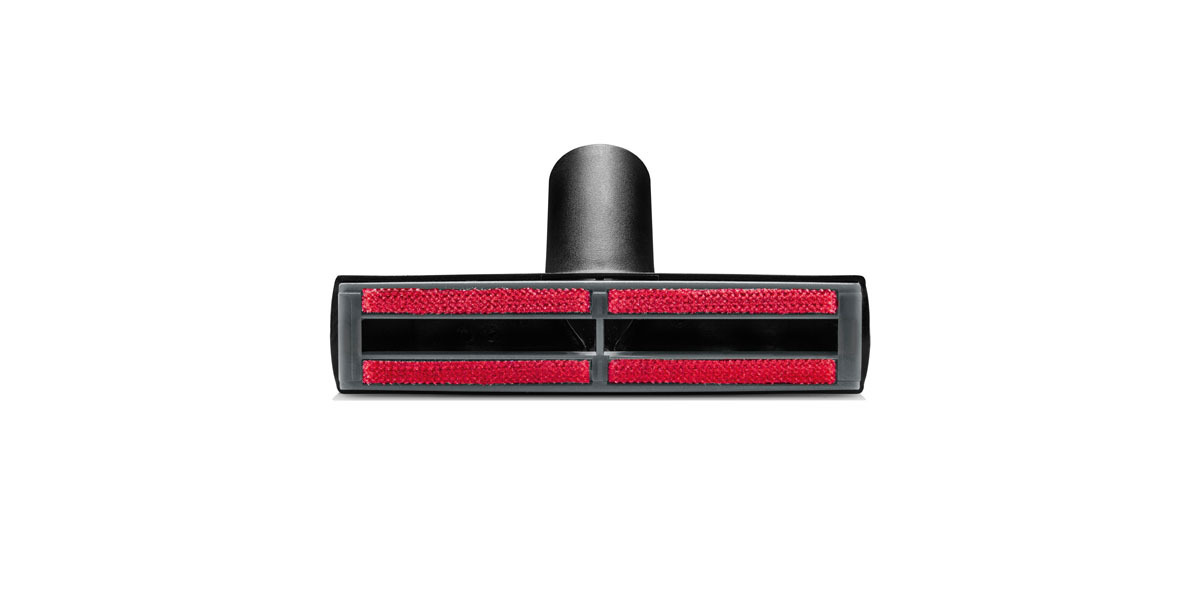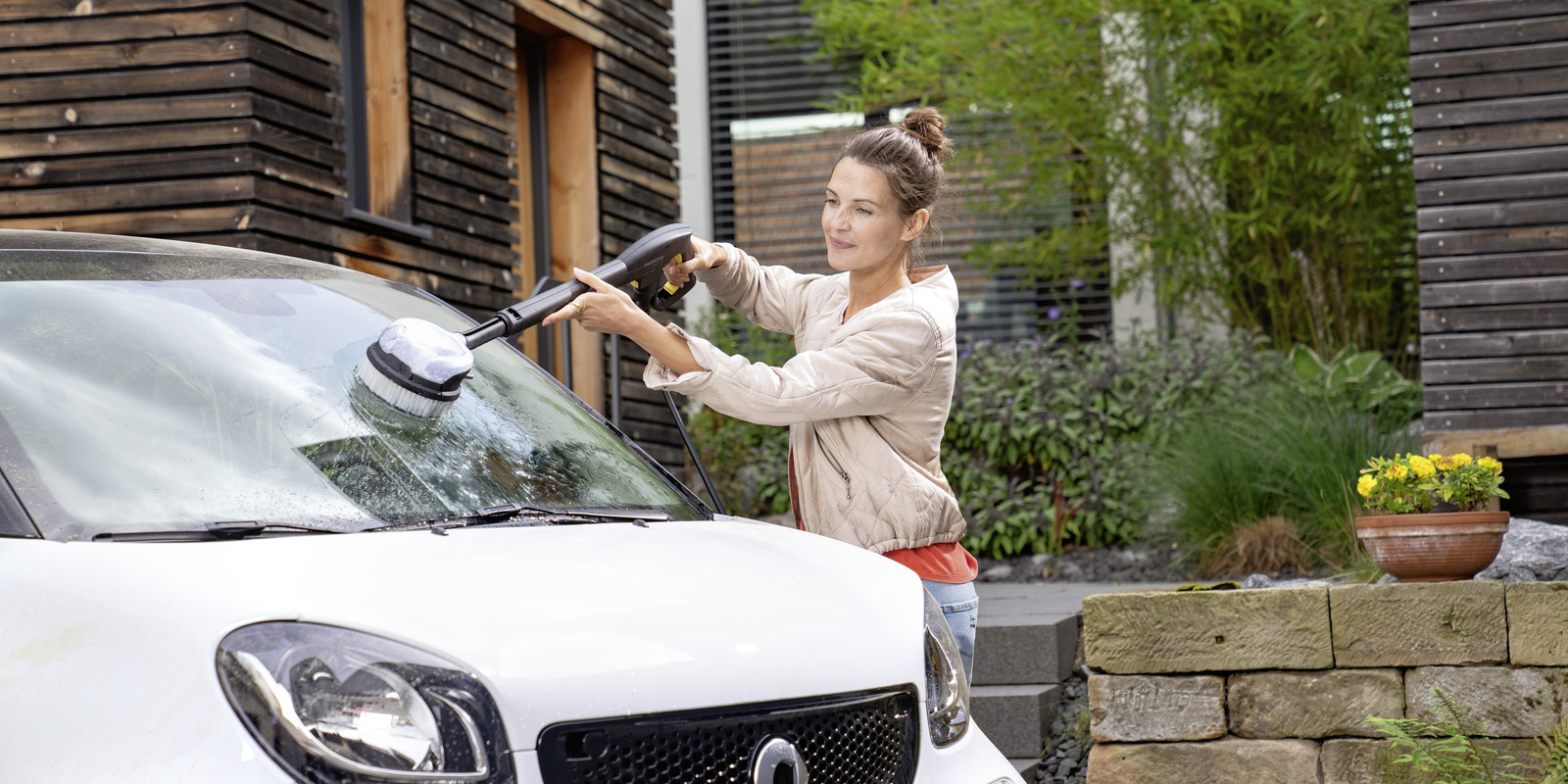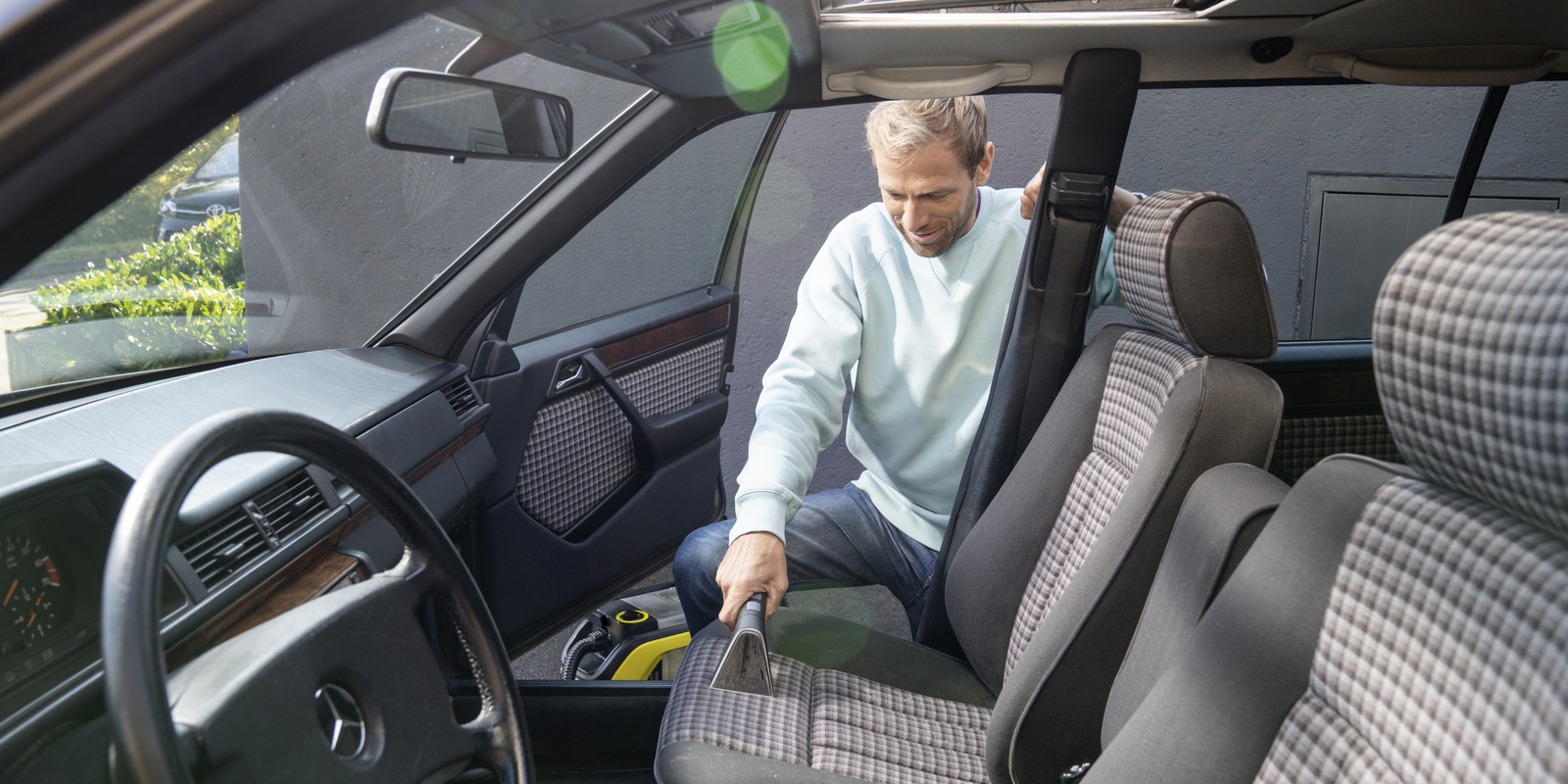CAR INTERIOR CLEANING AT HOME
If you want to keep your car looking good for as long as possible, it requires more than just a quick wash on the outside. From the seats to the cockpit, and the windows to the floor mats - thorough car interior cleaning is also part of taking care of your car and needs to be done on a regular basis. This protects the material inside and ensures that the vehicle retains its value for a long time. With just a couple of tricks and the right equipment, the inside of your car will be spotless in no time.
Be well equipped with the right preparation
Before you begin thoroughly cleaning your car’s interior, you should first remove any loose objects, rubbish, floor mats, and carpets from the vehicle. It’s normal for loose dirt to collect over time, especially under the floor mats. Shake off the mats outside and lay them to the side. After that, make sure you have all the necessary tools within reach such as a vacuum cleaner or dustbuster, cleaning cloths, and cleaning solutions. Many manufacturers offer extensive car interior cleaning kits for your vacuum that include extension nozzles, extra long crevice nozzles, wide car nozzles, suction brushes, and microfibre cloths for cleaning smooth surfaces and windows.
Car interior cleaning: Step by step
After you’ve emptied out the inside of the car, you can start cleaning the interior. There are only a few steps standing between you and your sparkling car interior:
1. Thoroughly vacuum your car
First, you should clean the entire interior with a wet and dry vacuum cleaner to remove coarse dirt such as crumbs, soil, and pet hair. It’s best to start in the boot and then work your way forwards to the cockpit. When vacuuming, make sure you don’t forget the narrow gaps, as this is where a lot of loose dirt usually collects. Special nozzle attachments such as an extra long crevice nozzle work perfectly in these tight spots. They can be used to pick up dirt even in hard-to-reach places inside the car, such as between the seat and door or on the dash. Wide car nozzles make light work of cleaning larger areas such as footwells and the boot. For these areas, simply attach the appropriate nozzle to the handle of the suction hose. Battery-powered vacuum cleaners with rechargeable batteries make the work even easier since you’re not restricted by a cable. Another advantage is that there is no risk of tripping with the cordless models.
The upholstery should also be thoroughly vacuumed. A suction brush with hard bristles is the best choice to remove fine dust from fabric seats. For leather upholstery, a brush with soft bristles is recommended so that the material doesn’t get scratched.
For cleaning in between, loose dirt from seats and in the crevices can be easily removed with a battery powered handheld vacuum cleaner and a crevice nozzle.
Tip: Remove dog hair from the car
Dog hair sticks particularly well to fabric car seats and to the material lining the boot. Try to remove as much hair as possible with a vacuum cleaner first. For this, it is best to use the upholstery nozzle. If there is still dog hair that just won’t budge, take a lint roller or brush and see if this helps. Another tip is to simply take a damp rubber glove and gently run your hand over the seats, then vacuum up the loosened hair.
In order to stop your car’s interior from being home to a collection of dog hair, it helps to brush your four-legged friend regularly and also to line the seats or boot with a dirt-trapping mat. These are usually made of a washable material so that hair and dirt can be easily removed from them.
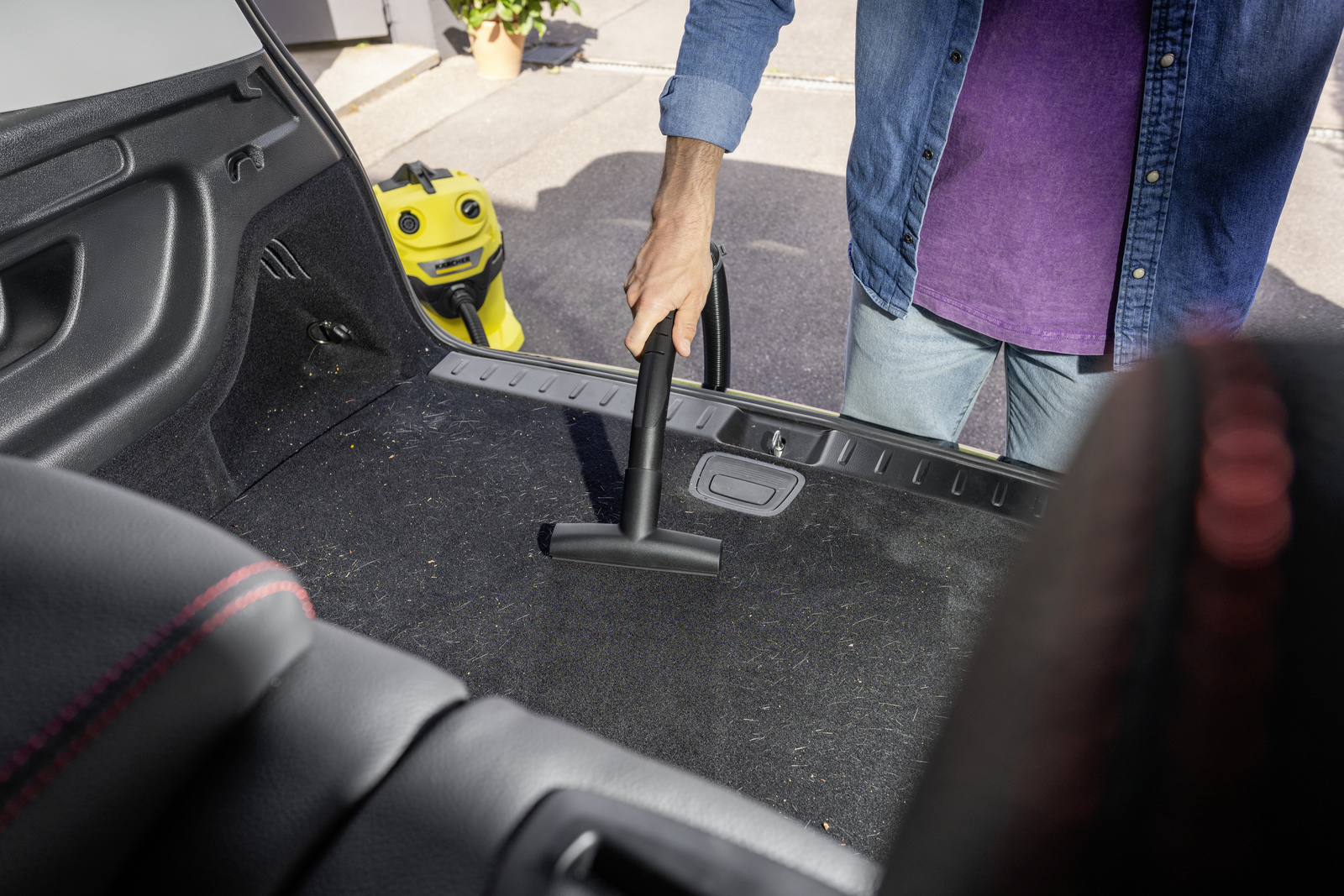
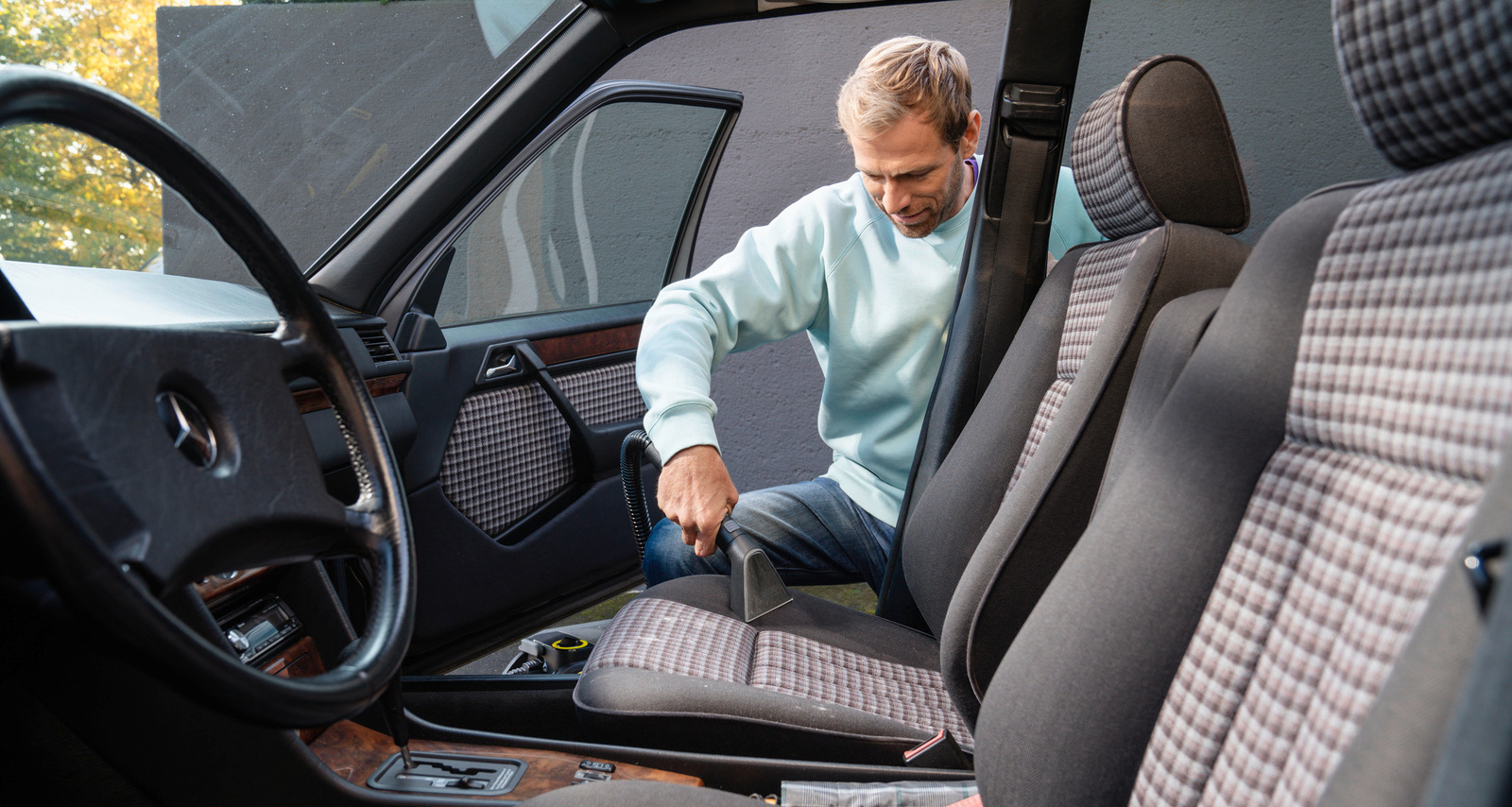
2. Thoroughly clean car seats, fittings, etc.
After vacuuming, it’s time to move onto step 2 of the interior cleaning process. First, remove dust from the fittings and wipe them with a damp cloth. Then it’s time to remove more of the stubborn stuck-on dirt, such as any grease stains on the upholstery or dried chewing gum on the floor mats.
Grease stains, just like most stains, are easier to remove if you act as quickly as possible and don’t rub the stain! You can make a solution to remove these stains from products you have lying around at home. One option is to use bile soap - simply moisten it a little, apply it to the stain, let it soak in, and then dab it off with a damp cloth. Rinse the cloth again and again so that the bile soap dissolves from it. Finally, dab with a dry cloth to draw the moisture out of the fabric. Important: Always test the product on an inconspicuous area first.
To clean your upholstery particularly thoroughly, we recommend using a carpet cleaner, which applies water and cleaning agent to the seat and vacuums it off again in just one step. The method leaves you with clean upholstery and no water marks in sight.
Tip
If chewing gum has become stuck on the floor mats, there’s a simple trick you can try. Place a freezer pack or ice pack on the affected area until the gum becomes hard and brittle. Now it can either be loosened by hand or smashed into small pieces with a hard object. After that, simply vacuum up the remnants with a vacuum cleaner.
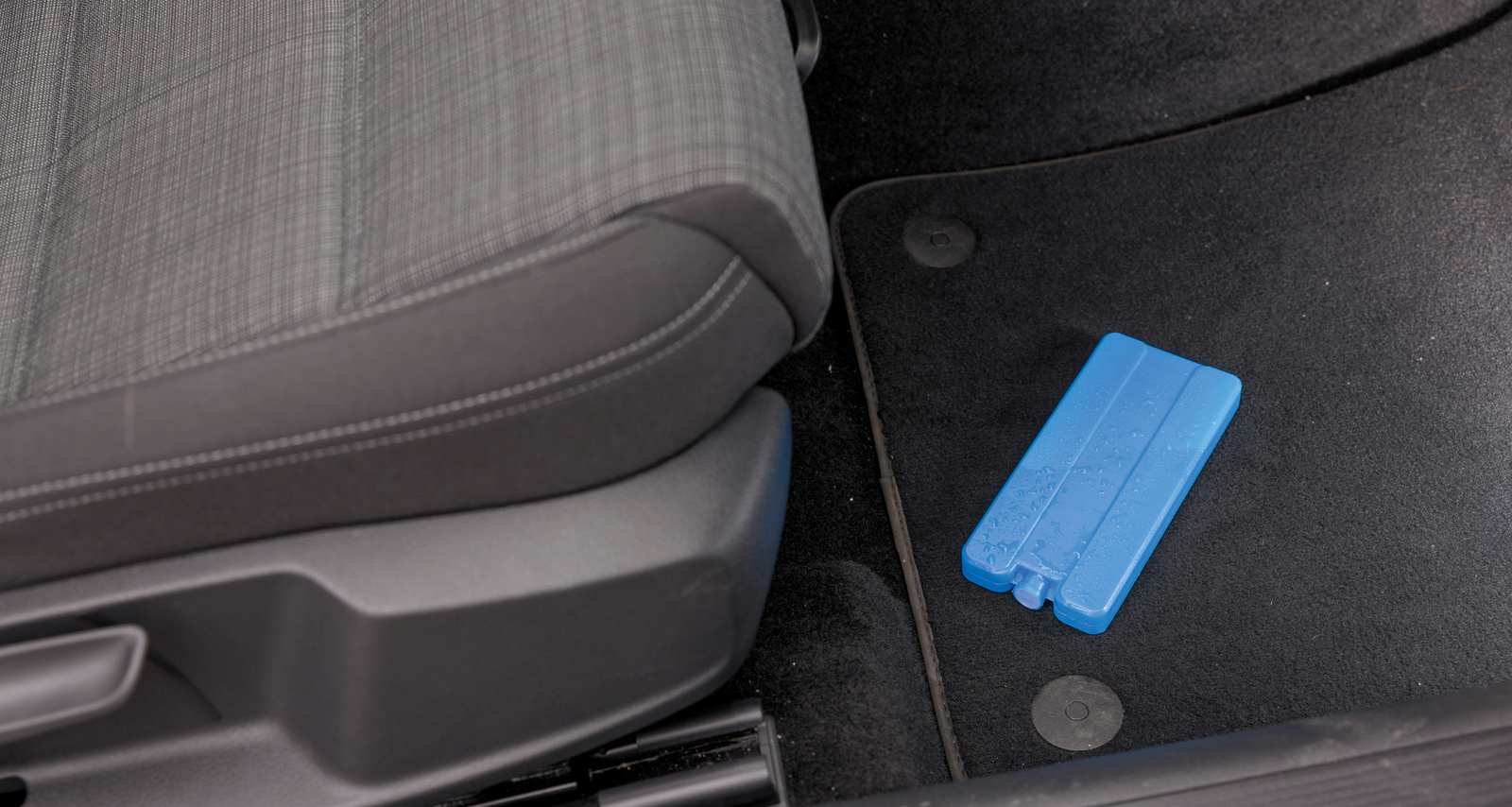
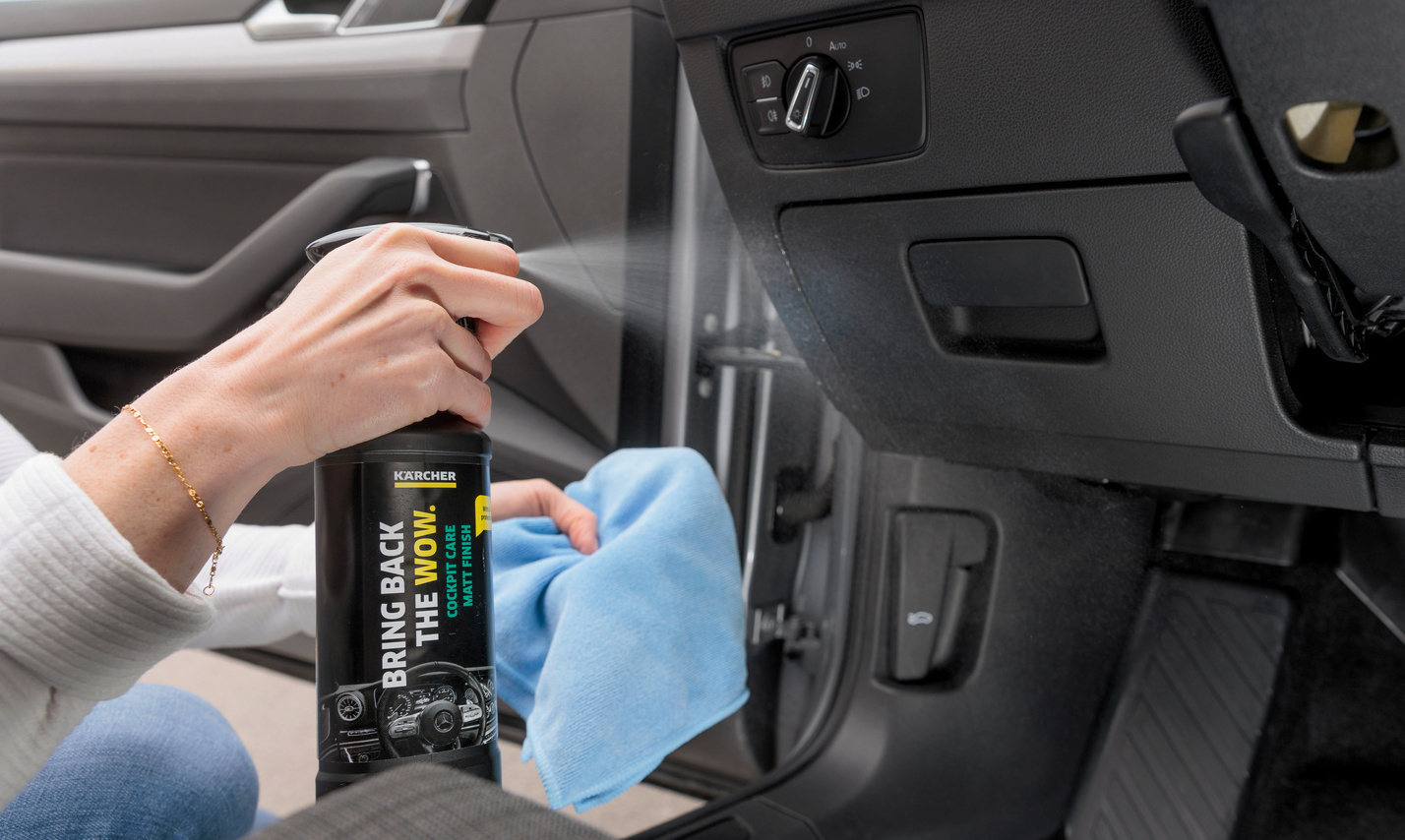
3. Maintain the interior
The final step is to take care of the interior. The right cleaning products prevent new dust and dirt from making themselves at home and also ensure that the interior gives off a fresh scent. For car interior cleaning, there are special interior cleaners that neutralise odours and have an antistatic effect. Sensitive surfaces such as leather seats or fittings can be kept in good condition with a leather care product or cockpit care.
Taking care of your car doesn’t only mean cleaning the interior, it also entails thoroughly cleaning the exterior of the vehicle including the wheel rims. This should be done regularly.
The best tips for cleaning different surfaces
When cleaning the interior of a car, you’ll realise you will have many different kinds of dirt to deal with as well as different surfaces. There are various methods that are suitable for cleaning each material.

Leather
- Leather is usually easy to clean, but requires special treatment to get it looking its best. A cotton or microfibre cloth dipped in lukewarm water is usually enough to get leather surfaces sparkling once again.
- For more stubborn stains, a diluted household cleaner or a leather cleaner should do the trick. Apply it in circular motions and then wipe it off with a microfibre cloth. In addition, a special leather brush can be used, but the bristles should not be too hard. Caution: Using acid-based products or applying too much pressure on the material can cause the colour to come off.
- Since the leather is deprived of important oils and fats when it is cleaned, these properties should then be re-applied in the form of a special re-greasing leather product, which is made especially for leather and prevents it from becoming brittle. This should be tested in advance on a non-visible area to check that it works.

Fabric surfaces and floor mats
- A special carpet cleaner is suitable to get fabric seat covers or floor mats looking their very best once again. Mix the cleaner with water according to manufacturer’s instructions and apply with a terry cloth towel or microfibre cloth. Then go over once more with a dry cloth.
- If you have no carpet cleaner to hand, you can use warm water instead and add a little detergent to it, or alternatively use an interior cleaner that is suitable for cleaning fabric surfaces.
- Thorough upholstery cleaning with a carpet cleaner is even easier. The cleaning solution and water are sprayed onto the fabric and then vacuumed off with the loosened dirt.
- Floor mats can also be cleaned with a pressure washer, either your own or use one at a car wash. In some car washes there are also special devices to give floor mats a professional clean.
- The mats should be hung up after being cleaned so that the remaining water can drain off well and they’re ready for use once again. Make sure they are completely dry, so you don’t bring extra moisture into the car.

Plastic
- Plastic parts such as fittings and handles can be quickly refreshed with the right care product. A special cockpit care product is best suited.
- Spray the solution onto a microfibre cloth and rub it over the surfaces. This should remove any soiling and even light scratches without you having to take your car to a professional.
- Be careful when cleaning around the airbag as the wrong products can interfere with the predetermined breaking points. Some manufacturers therefore recommend to simply use water to clean around this area.

Glass surfaces
- Car glass cleaners effectively remove fingerprints, grease, insect stains, and road dirt from the interior and exterior of windows without leaving any streaks behind. In addition, their antistatic effect ensures that new dirt finds it harder to make itself at home. Cleaner windows could reduce the risk of accidents because when the sun shines on dirty windows, the driver’s vision could be impaired.
- First spray the surfaces in the interior with glass cleaner, then wipe them using a damp microfibre cloth and rub dry with a lint-free cloth.
- A window vacuum cleaner help you obtain a streak-free result even faster and the cleaning solution can even be vacuumed from the glass.



